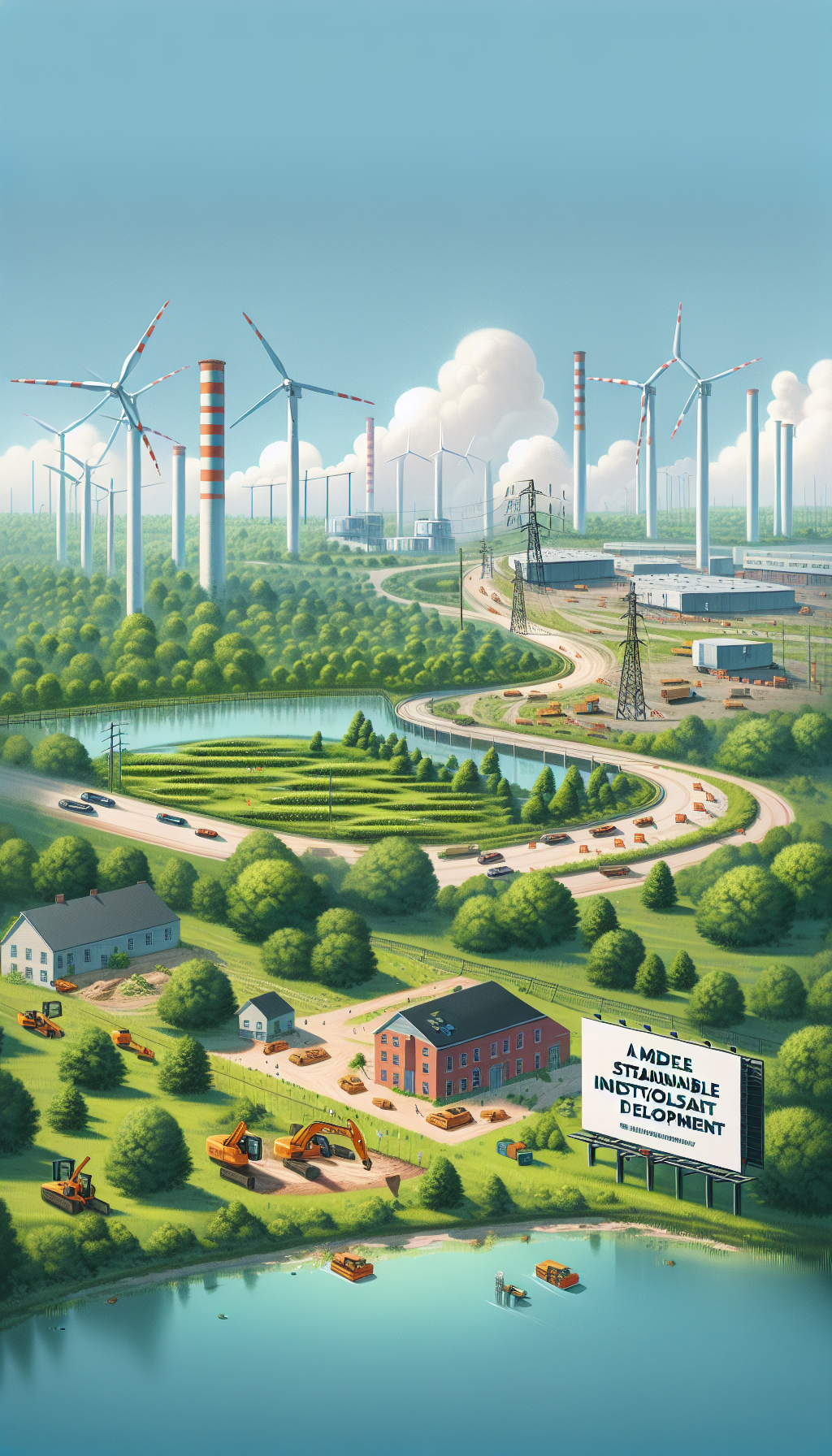Sustainability Practices in US Industrial Property Development
1. Understanding Sustainability in Industrial Development
Sustainability in industrial property development involves practices that aim to minimize negative environmental impacts, enhance economic efficiency, and promote social equity. The rise of sustainable development principles in the industrial sector can be attributed to growing awareness of climate change, resource depletion, and the need for a circular economy.
2. Energy Efficiency in Design
One of the primary sustainability practices is the implementation of energy-efficient designs. This includes utilizing advanced building materials that offer superior insulation and energy efficiency. For instance, reflective roofing helps reduce heat absorption, while insulated panels maintain optimal internal temperatures, reducing heating and cooling costs.
Additionally, strategic placement of windows and skylights maximizes natural light, decreasing reliance on artificial lighting. Utilizing energy-efficient HVAC systems and smart technologies enables real-time monitoring and management of energy consumption.
3. Renewable Energy Integration
Incorporating renewable energy sources into industrial facilities is becoming a prominent trend. Solar panels, wind turbines, and geothermal heating systems are widely adopted to offset energy needs. The federal and state governments offer various incentives that encourage developers to invest in clean energy technologies.
Moreover, many industrial parks are now designed with microgrid capabilities, allowing buildings to generate, store, and manage energy locally. This self-sufficiency is crucial for resilience against energy shortages and grid failures.
4. Sustainable Material Selection
Developers are increasingly opting for sustainable building materials, such as recycled steel, reclaimed wood, and sustainable concrete, which have lower environmental impact than traditional options. The use of low-emission materials contributes to healthier indoor air quality, an essential aspect of sustainable development.
Additionally, the lifecycle assessment of materials helps identify sustainable sourcing options that reduce carbon footprints. Products certified by leadership organizations, such as Forest Stewardship Council (FSC) and Cradle to Cradle, are prioritized.
5. Water Conservation Techniques
Water management is another critical aspect of sustainable industrial property development. Green roofs, permeable pavements, and rainwater harvesting systems are employed to manage stormwater effectively, reducing runoff and minimizing the risk of flooding.
Industrial sites are increasingly using water-efficient landscaping practices that incorporate drought-resistant plants and native vegetation, significantly reducing irrigation needs. Furthermore, facilities often incorporate greywater recycling systems for non-potable uses, thereby conserving potable water resources.
6. Waste Reduction Initiatives
Zero-waste initiatives are gaining momentum in industrial development. Strategies include designing buildings with easy access to recycling facilities, promoting separate waste collection, and encouraging tenants to adopt waste reduction practices.
Building management often implements composting programs and collaborates with local waste management agencies to ensure proper disposal and recycling of industrial waste. By working towards minimizing waste output, developers can align their operations with circular economy principles.
7. Infrastructure for Sustainable Transportation
To reduce carbon footprints associated with logistics and transportation, industrial developers prioritize easy access to public transportation and encourage alternative transportation methods. They often include bike paths, electric vehicle charging stations, and electric bus rapid transit corridors in property layouts.
Furthermore, facilities are increasingly designed with warehouse distribution centers that optimize logistics by minimizing travel distances for freight delivery and improving fuel efficiency.
8. Engaging Stakeholders and Communities
Community engagement drives sustainable design practices in industrial property development. Developers are involving local communities and stakeholders in the planning process to ensure that projects align with regional sustainability goals and benefit local economies.
This engagement includes public forums to gather insights, addressing community concerns about environmental impacts, and considering economic benefits like job creation and local partnerships. A collaborative approach fosters responsible development that is socially accepted and economically viable.
9. Certifications and Standards
Achieving sustainability in industrial property requires adherence to recognized standards and certifications, such as LEED (Leadership in Energy and Environmental Design) and BREEAM (Building Research Establishment Environmental Assessment Method). These frameworks provide structured criteria for sustainable building practices, from site selection to operational strategies.
Developers often pursue these certifications to enhance marketability, access incentives, and meet regulatory requirements. The international recognition of these standards can also attract environmentally-conscious tenants and investors.
10. The Role of Technological Innovation
Technological advancements are vital in shaping sustainable industrial practices. The integration of the Internet of Things (IoT), artificial intelligence, and building automation systems enhances energy management, predictive maintenance, and operational efficiency.
For example, IoT sensors monitor equipment performance and energy usage in real-time, enabling teams to make informed decisions that improve sustainability outcomes. Drones and digital twin technology can support site assessments and logistics, ensuring that projects meet their sustainability benchmarks.
11. Life Cycle Assessment and Planning
Integral to sustainable property development is life cycle assessment (LCA), which evaluates the environmental impacts of a building throughout its lifecycle, from raw material extraction to disposal. This comprehensive approach empowers developers to make informed decisions when planning new projects, optimizing energy and material use, and minimizing environmental degradation.
12. Policy and Regulation Influence
Federal, state, and local policies increasingly mandate sustainability standards in industrial development. Programs such as the Clean Power Plan and state-specific environmental regulations drive investors and developers towards sustainability practices, offering grants and financial support for qualifying projects.
By complying with regulations, companies can avoid penalties and contribute positively to their corporate social responsibility goals, fostering a sustainable corporate image.
End of Article
This article diligently outlines the comprehensive sustainability practices in US industrial property development, reflecting key components necessary for effective development while adhering to modern environmental needs.

